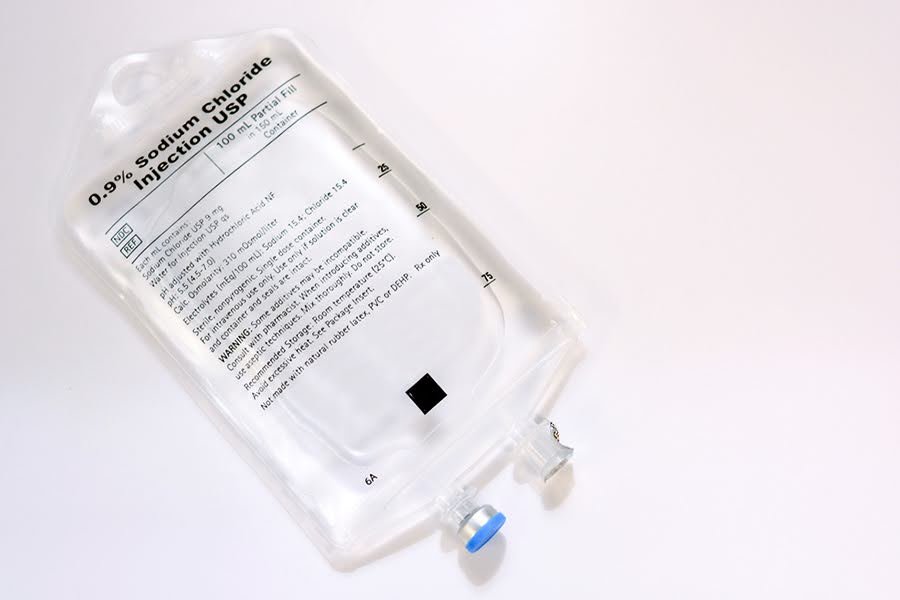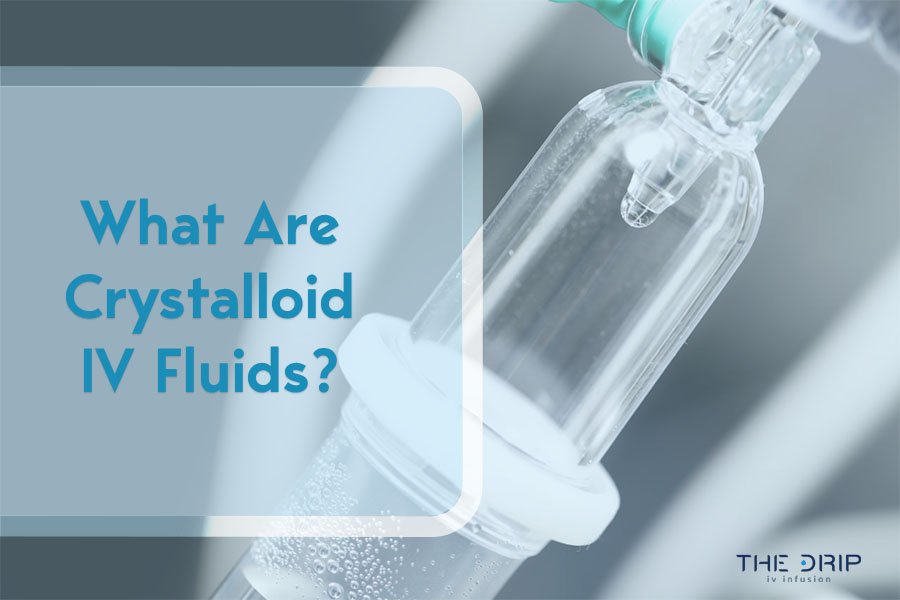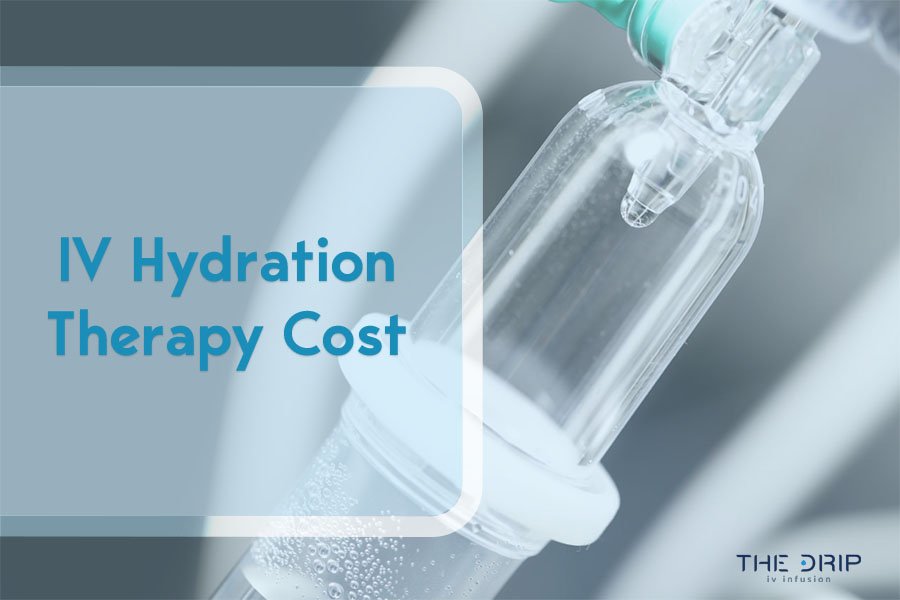IV therapy is a common medical procedure involving fluids directly into your bloodstream. However, with ever-lasting medical advancements, keeping track of all the types of IV fluids can get difficult. You may wonder how the different fluids react with your body as intravenous treatments become more popular. So, what are isotonic IV fluids, and how do they work?
Acknowledging and understanding the differences between isotonic, hypotonic, and hypertonic is fundamental for patients as these directly influence their body’s fluid balance, electrolyte levels, and overall well-being. This knowledge can empower you to confidently indulge in your healthcare procedures and contribute to safer and more effective treatment outcomes.
In this article, you’ll gain insights into the different types of IV fluids, an overview of isotonic intravenous fluids, and their use in medical settings. You’ll also learn more about its unique administration requirements and the potential diverse effects of these IV solutions.

Source: shutterstock.com / Photo Contributor: nampix
Types of IV Fluids
In healthcare clinics, intravenous fluids are vital in maintaining your electrolyte and hydration balance. You are prescribed IV solutions dependent on your electrolyte and fluid volume status. These fluids are commonly categorized into two main groups – colloids and crystalloids.
Colloid solutions contain large molecules that cannot cross semipermeable membranes. In contrast, crystalloid solutions contain small electrolytes and molecules that flow smoothly across semipermeable membranes and are easily mixed and dissolvable in solution.
There are three main types of IV fluids distinguished by their tonicity, which refers to the volume behavior of cells in a solution. These include:
Isotonic IV solution has the same or similar concentration of solutes as blood plasma.
Hypotonic solution has a lower concentration of solutes than blood plasma.
Hypertonic IV solution uses higher concentration solutes than blood plasma.
These fluids are customizable, sterile, intravenous solutions accommodating various ingredients to address many conditions. For those seeking specialized intravenous services, IV drip Queen Creek Arizona is a reliable, professional medical care provider with tailored and personalized therapies. You may enhance your overall well-being by precise procedures with accurate dosage and administration.
Overview of Isotonic IV fluids
Most intravenous fluids are isotonic, meaning they have the same or a similar concentration of dissolved particles as your blood plasma. Technically, electrolyte IV solutions are considered isotonic if the total electrolyte content is approximately 310 mEq/L.
When infused, these solutions maintain a constant but balanced osmotic pressure with equal amounts of fluids, both inside and outside cells. The fluid stays in the intravascular space because of the similar concentration between the IV fluid and blood. Osmosis does not cause fluid movement between compartments.
Since isotonic intravenous fluids have a total osmolality close to that of the ECF, they cause the cells to remain the same, preventing them from shrinking or swelling. Some of the most common beneficial effects of isotonic IV solution may include:
Treatment of dehydration – Due to the similar concentration of solutes as the blood plasma, isotonic fluids may restore fluid balance without causing a shift of water in or out of cells.
Replacement of fluids lost due to surgery, trauma, or other medical conditions – Isotonic IV fluids maintain electrolyte and hydration levels, possibly supporting the body’s functions and promoting a smoother recovery process.
Maintenance of fluid and electrolyte balance – Due to their composition, isotonic fluids ensure optimal hydration and may help sustain electrolyte and fluid balance.
Types of isotonic IV fluids
The following are the three of the most common types of isotonic intravenous fluids available in medical clinics:

Source: shutterstock.com / Photo Contributor: AlteredR
1. Normal saline solution (0.9% NaCl)
Normal saline solution (NSS) is one of the most common crystalloid isotonic fluids in intravenous therapy, widely used for fluid resuscitation and replenishing electrolytes. It contains water, 154 mEq/L of sodium, 154 mEq/L of chloride dissolved in the solution, and an osmolality of 308 mOsm/L, giving no calories.
The normal saline solution may be particularly beneficial when it comes to treating hemorrhaging, severe vomiting, diarrhea, wound drainage, GI suctioning losses, mild hyponatremia, or blood transfusions. Similar to that in the intravascular space, its composition makes this fluid so compatible and an essential tool in medical care.
2. Lactated Ringer’s solution
Lactated Ringer’s is an isotonic fluid designed to be the most physiologically adaptable because of its balanced electrolytes closely related to the body’s blood serum and plasma composition. It contains sodium (130 mEq/L), potassium (4 mEq/L), calcium (3 mEq/L), chloride (109 mEq/L), and bicarbonate precursors for preventing acidosis.
The Lactated Ringer’s solution is likely the first choice for fluid resuscitation and is often used during surgery. It may also help with dehydration, sodium depletion, GI tract fluid losses, burns, traumas, or metabolic acidosis.
3. Dextrose 5% in water
Another common isotonic solution is 5% Dextrose water (D5W), carrying a serum osmolality of 252 mOsm/L. It provides free water when dextrose is metabolized to potentially help renal excretion of solutes, hypernatremia, and some dextrose supplementation.
Essentially, it’s administered to correct an increase in serum osmolality. One liter of Dextrose water provides less than 200 kcal and contains 50g of glucose. However, this solution isn’t designed for fluid resuscitation as the others since it may result in hyperglycemia.
Administration of Isotonic IV fluids
They are mainly administered intravenously through peripheral veins. While solution volumes and rates are based on your conditions and requirements, the standard is 50-100 ml per hour.
However, precise administration techniques, controlled infusion rates, and accurate dosing are essential for ensuring the safety and efficiency of the procedure. Careful monitoring and proper administration techniques are critical when avoiding potential risks and complications.
That is, too much isotonic fluid moving out of the intravascular compartment into cells might cause several adverse effects, emphasizing the importance of a controlled procedure. As a result, when hypotonic solutions are administered, your condition must be closely monitored.
So, isotonic IV saline could be associated with specific side effects due to the non-physiological electrolyte composition. These include:
Metabolic acidosis
Impairment of kidney function
Possibility of abdominal pain
Higher incidence of postoperative complications
Excessive fluid volume or hypervolemia

Source: shutterstock.com / Photo Contributor: MDV Edward
Conclusion
Isotonic IV fluids closely mimic the concentration of dissolved particles in your blood plasma, potentially aiding in optimal fluid and electrolyte balance. A comprehensive understanding of these solutions is fundamental for anyone undergoing such procedures.
These fluids are one of the most commonly used in healthcare due to their composition, possibly utilized to treat dehydration, support the body’s functions, and contribute to your overall well-being. However, careful monitoring, proper administration, and controlled infusions are critical for a smooth and safe operation.
Hopefully, this article has given insight into isotonic intravenous fluids and their significance in healthcare.




